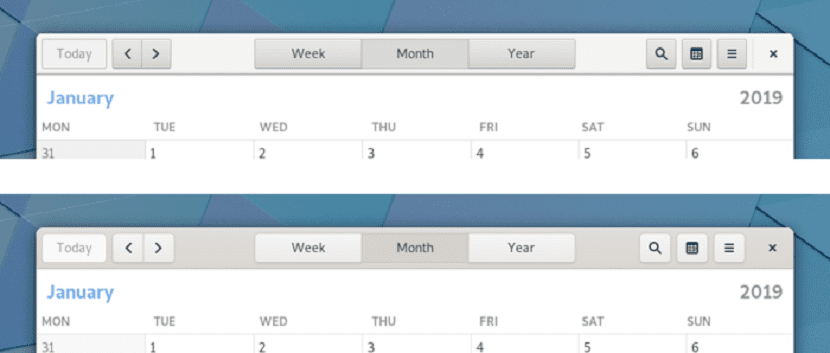
Matthias Clasen, the Fedora Desktop Team Leader and a member of the GNOME Release Team, reported that it tried the improved Adwaita theme which is used by default in GTK + 3.
Before including changes to the composition of GTK 3.24.4, users are given the opportunity to try out a new theme and comment on it.
The updated theme comes as a separate file, released in parallel with the release of GTK 3.24.3.
The last significant modernization of the design theme took place in 2014. The current change is not that dramatic and is mainly focused on improving the little things and adjusting the color scheme.
The theme is taken to a more modern form, but without violating application widget layout support.
The change refers only to the Adwaita theme, it does not affect other themes, as well as the CSS selectors and GTK classes that have not changed since the GTK 3.22 release.
Updating Adwaita is challenging as most of the GTK applications use the stable 3.x series, and some of them include the Adwaita-compatible theme for their own custom widgets.
Given the stable nature of this release series, we don't want to cause theme compatibility issues for apps. At the same time, 3.x is the major version of GTK in use today, and we want to make sure that GTK applications don't feel outdated or out of date.
The main changes in the Adwaita theme
The colors were slightly corrected as they have become brighter. The proposed color scheme is developed as part of a unified palette, which is also used for application icons.
An attempt was made to make the panels and buttons more elegant and lighter, which was achieved by reversing the brightness, removing the flashy frames, and a little more rounding of the corners.
In the light version of the theme, instead of the dark buttons being framed on a light background, now light buttons are proposed on a dark background with the effect of casting a small shadow.

Active modes and tabs are highlighted with a dark shade. Most notable is the distinction between active and inactive window headers.
However, two places where there are widget-specific changes are the header bars and buttons. In both cases, an effort has been made to be lighter and more elegant.
The widget was modified with the implementation of mode switches. If before the switches were clearly labeled "ON" and "OFF", now that these switches have become familiar to users, it has been decided to use more compact icons instead of text labels, and to round out the shape of the switch.
In the other widgets, the changes are hardly noticeable, except for a small color adjustment.
We hope to find a balance between GTK's promises of stability, on the one hand, and the desire to provide up-to-date applications, on the other. It's a delicate balance to get it right and we are interested in engaging with GTK users as part of this process!
Other than the changes described above, very little has changed in Adwaita. The vast majority of the widgets remain the same, although with very slightly altered colors. In general, UI layouts should not be altered and users should be comfortable with the changes.
How to get this theme?
The updated Adwaita theme is available as a separate file in parallel with the GTK 3.24.3 version and you can download here.
GTK application developers are invited to test 3.24.3 alongside the new version of Adwaita and report any issues they find.
The GTK team and the Adwaita authors will also conduct their own tests. The details of how to test the new theme in various ways are described here.
The update of the subject is appreciated but the underlying problem is that the current Gnome 3 CSD is not integrated by the GTK 2 applications, they are reluctant to do so; furthermore, some GTK 2 applications such as Audacious that had made efforts to aesthetically migrate to GTK 3 decided to retract and suspend the adaptation. This in practice means that we are doomed to have a desktop circus: some applications with universal CSD like GTK 2 (with title bar and application menu bar in letters with the possibility of overriding them saving space with the Global Menu), and others with CSD GTK 3 (with thick omnibar and hidden application menus).